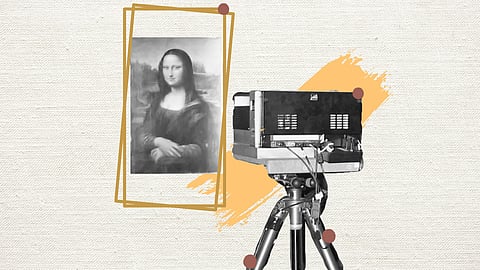

Multispectral camera, also known as the Lumiere technology camera, is a first of its kind hypersensitive and high-resolution camera in the world. The technique used makes it possible to extract the information contained in the pictorial layer without any direct contact with the painting. Therefore there is no direct altercation in the artwork, yet you can study it thoroughly, and it has helped art historians analyse the layers of a painting.
This new technology was used to study Leonardo Da Vinci's most famous painting, Mona Lisa, kept at the Louvre in Paris. Faint traces of charcoal underdrawing were visible, as well as evidence of spolvero technique in which the artist pricks tiny holes along with the outlines of the drawing and uses charcoal dust to transfer the cartoon to canvas.
This discovery feat was achieved by scientist Pascal Cotte and published in the Journal of Cultural Heritage. With his Lumiere Technology camera, Cotte’s pioneering 'layer amplification method' can detect light reflected on 13 wavelengths, building on the work of infrared photography, which has previously been instrumental in making visible to the naked eye details hidden beneath the surface of a painting.
“The optical system allows us to see very fine details, and the high sensitivity allows a very high amplification of (the) low signal,” Cotte said in an interview to Artnet News.
This is the first time a spolvero has been spotted in Leonardo's famous painting. It raises the fascinating possibility that somewhere out there, a paper drawing of the Mona Lisa by Leonardo’s hand may still exist — and that it would feature a slightly different pose, as the underdrawing shows the artist made adjustments to the final composition.
This technique will also be beneficial to further study paintings of other Renaissance masters and prove to be critical in art history. Detailed study of artwork of masters like Vincent Van Gogh, Picassio, Monet, etc will be made possible.
